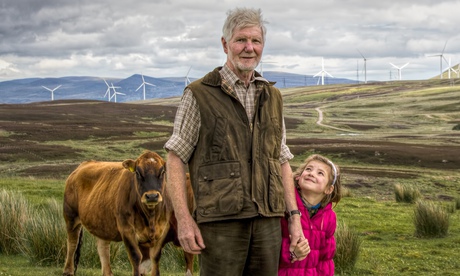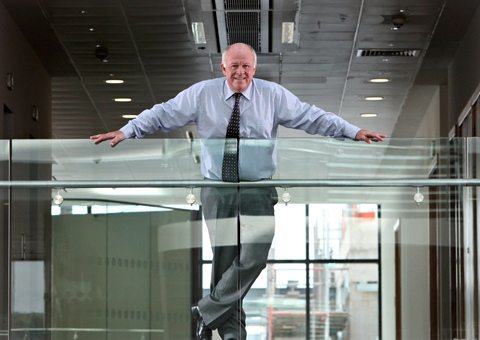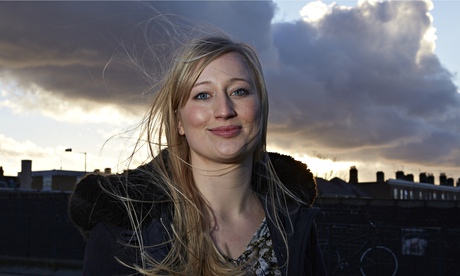Savers are being offered returns of up to 9% a year – or four times the best available rates on cash Isas – by lending their money to build wind and solar energy projects across the UK. Promoters claim the schemes offer a steady and predictable income, although they are not without risk.
A primary school in Leominster, Herefordshire, is raising money to place solar panels on its roof – with the lure of extraordinary tax breaks. A renewable energy co-operative building wind turbines in Derbyshire and Yorkshire has a scheme expected to give its investors 7.3% a year. In Teesside, local farms and businesses will be powered by turbines promising returns of up to 7.5% a year, while near Liskeard in Cornwall a single wind turbine is claiming that returns should be around 9% a year.
Most of the schemes allow savers to invest small sums – from £50 upwards – and some give tax breaks worth 50% off your income tax liability, plus no capital gains or inheritance tax. "You can get great returns and do something good with your money," says Bruce Davis of Abundance Generation, which helps to promote a variety of schemes. "After raising more than £6.3m for UK renewable energy companies, providing jobs and clean energy for the UK economy, we have shown that people want investments that achieve a real 'win-win': doing something good with money while making a good return."
Does this all sound a bit too good to be true? When a scheme is promising returns so much higher than the rates paid on deposit accounts, there has to be a catch. And with these schemes, there are several:
• Your money is locked away – usually for at least three years and, with some, for as long as 20. Early exit is possible, but not guaranteed.
• If the scheme goes bust, you could lose all your money, as the projects are not covered by the Financial Services Compensation Scheme.
• Prices in the energy market could collapse, or expected levels of energy production from a turbine or solar array might not materialise.
But if such factors don't put you off, and you want an investment with a social and financial return, here are some examples of what is on offer.
Sharenergy
A not-for-profit co-operative that helps communities find, build and own renewable energy generation throughout the UK. Its schemes tend to offer shares in the projects, with tax breaks under the Enterprise Investment Scheme. "It's not just greenies who are investing, but people who like the social enterprise model," says director Jon Halle. "The fact the banks aren't much involved, or that the 'big six' energy firms aren't part of it, has become quite an attractive element for our investors. Our Dingwall project was the first 100% cooperatively owned wind turbine in Scotland, owned by 179 people."
It is now promoting the Wester Derry Wind Co-op, which is aiming to raise £800,000, with a minimum investment of £250. The anticipated return is 7% a year, and "pioneer" investors who join early can expect to obtain 50% tax relief on their investment through the government's Seed Enterprise Investment Scheme (SEIS). But it is very long term, running over 20 years, best suited, says Halle, to "patient capital".
In Leominster, the co-op installing solar panels on a new primary school, has so far raised £23,000 of its £150,000 target. It is projecting a return of 4% a year but, with SEIS tax breaks, says that is equal to 10.4% a year – although, again, this is very long-term.
Energy 4All
Started more than a decade ago, it calls itself "the UK's leading expert in community-owned renewable energy schemes". Founder Andrew King was an early investor in the UK's first wind farm co-op, Baywind Energy, and has gone on to help to raise £13m for 10 others.
Tom Robinson is a member of the Great Glen, Kilbraur & Skye Co-operatives, supported by Energy4All. "It has worked out as excellent. There was one year when we only got 7.6%, but then you look at an Isa paying 0.1%. One year it was 10.6%," he says.
A spokeswoman for Energy4All says it has never failed to raise enough funds, with each scheme oversubscribed. And although members can't simply withdraw their money as they can on a deposit account, she says that every time someone has needed to cash in, other members have willingly stumped up the money, "because the returns have been so good". It is currently promoting the Four Winds Energy Cooperative, which has two sites with planning consents, one in Derbyshire, one in Yorkshire. It wants to raise up to £3.7m with a minimum investment of £250. It is targeting a return of 5.1% over the first five years, worth up to 7.3% for investors, who obtain 30% tax relief via the Enterprise Investment Scheme.
Abundance Generation
Unlike the schemes above, investors lend money rather than buy shares. They can put in as little as £5, and earn returns of between 6% and 9%. Projects open for investment are Engynious Schools, a £1m "solar on schools" programme, paying an effective return of 6.7%; BNRG Gorse, a £730,000 solar farm, with ground-mounted panels across a large field in Kent, paying 7.35%, and REG High Down, a £1.5m wind turbine in Cornwall, paying between 8.4% and 9.3%.
These projects are all long term – investors should be thinking in a 20-year timeframe – but Abundance has set up a bulletin board where those seeking an earlier exit can sell their holdings. One person currently selling is offering £100 of his stock for £120 just a year after investing – and has had 12 offers.
A spokesman for Abundance says: "Investors don't want their money used in supporting the arms trade, fossil-fuel extraction, or even bonus-hungry bankers. They clearly love it, as most have so far invested in at least three projects and 15% have invested in all seven of those made available so far. To date, nearly £6m has been invested."
Trillion Fund
A crowdfunding platform for renewable energy projects, so-called because its founders reckon that we need to raise $1tn to prevent climate change reaching damaging levels. One of its major shareholders is designer Vivienne Westwood, who says climate change, not fashion, is now her top priority.
Its platform includes some of the projects that Abundance Generation is promoting. Last week, it launched funding for E2 Energy, aiming to raise up to £5m for the construction and installation of wind turbines on sites that already have planning permission in the north, Wales and Scotland. It is anticipating returns of 7.5% a year, on a minimum investment of £50.
It is structured as a three-year investment, with lenders who put in £1,000 before 31 July getting back £1,225 at the end of three years. "That's a better risk-adjusted return than on current best-buy, three-year bonds or mainstream peer-to-peer loans," says a spokeswoman.
Interest on the fund is paid every six months, and it promises to return the capital invested after three years.
But like all of these schemes, the money is not protected by the Financial Services Compensation Scheme and investors shoulder the risk of the turbines failing to generate enough electricity.











